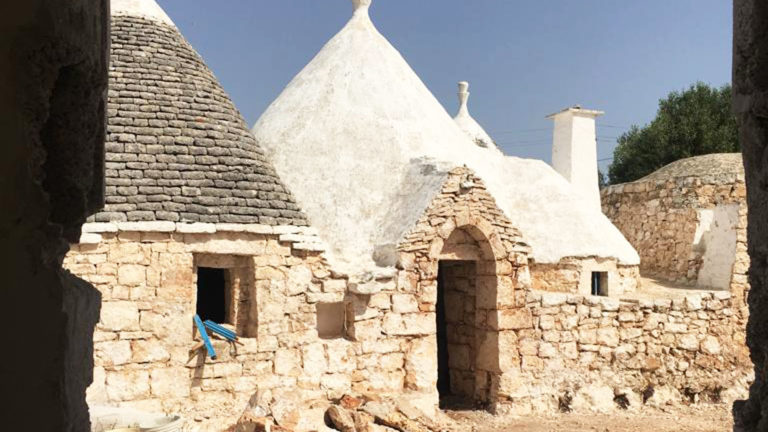COVID-19 Protocollo di sicurezza vacanza protetta. Leggi di più.
Restoration work
Petranima is a dwelling of nineteenth-century origins recently brought to light thanks to the mastery and hard work of the best maestri trullari. It stands among oak and olive trees in an uncontaminated valley in the sunny heart of the Apulian countryside. A unique opportunity to relive the history of the trulli immersed in the tradition and authenticity of this wonderful land. This name comes from the outcropping stones present in the property that you can also visit. Typical of the Apulian Murgia, these stones are the soul of the place, that’s why ”Petranima”.
Conservation and restoration
The architectural restoration project aimed to bring to light a place that today aims to become a privileged destination for new travelers. The conservation and restoration work was conceived with the aim of preserving the existing structure in its entirety. In particular, the recovery of the trulli and the casale, of the ancient ovens for collective use and of dry stone walls, symbols of rural wisdom and guardians of a past to be preserved, lived and handed down. The history of the trulli is a history that begins in the distant fourteenth century but the period of maximum expansion is considered to be 1400. In this historical period these typically domed buildings were thought to be ‘temporary’ houses. In this period, in fact, a new edict imposed very high taxes for each newly built country and then the landowners commissioned farmers to build dry houses, that is, without the use of materials intended to stick together after laying. In that way, if someone had gone to check, they could have brought down the little structure in a small range of time and turned it into a pile of stones. Today the trulli we know are the result of the work of architects and maestri trullari, who have transformed with their restoration works these ancient houses into real homes equipped with every comfort and luxury.
Vintage furniture
All the suites of Petranima have been furnished in full respect of tradition thanks to the use and recovery of wooden objects, ceramics and iron.
Balance and sustainability
Today the structure shines with new light and maintains all its original functions, continuing to do justice to the history of the trulli. It respects the environment and the principles of sustainability and integrates perfectly with the territory. It enjoys energy self-sufficiency, geothermal, solar and photovoltaic systems. Chemical insecticides shall not be used inside or outside the facility.

A regenerating journey through history, nature, architecture and well-being.
Contacts
SP 14 Ostuni – Martina Franca KM 11,800
C.da San Salvatore/Settarte
in Agro di Ostuni (Br)
How to reach us
© 2020 Fagitur Srl – P.IVA 08158760721 – Codice CIS: BR07401262000021246 – Privacy & Cookie Policy








